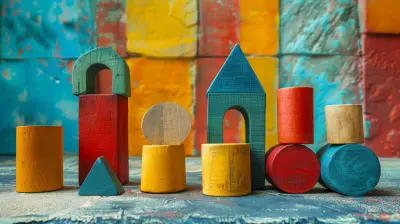25 September 2025
Let’s face it—if you’ve ever been a student, teacher, or even just curious about how learning is measured, you already know that traditional assessments often fall flat. Multiple choice, true or false, fill-in-the-blanks—they might be quick, sure, but do they really show what a student knows? That’s where open-ended questions come in. These aren’t just fluffy add-ons to tests—they're powerful tools that dig deep into how students think, reason, and understand the world around them.
In fact, if you're serious about getting a real sense of student learning, open-ended questions are your secret weapon. So, buckle up! We're going to break this topic down, peel back the layers, and show why open-ended questions deserve a front-row seat in every classroom and assessment strategy.
What Exactly Are Open-Ended Questions?
Let’s start with the basics. Open-ended questions are prompts that can’t be answered with a simple “yes” or “no” or a single word. They require explanation, reasoning, and creativity. Instead of asking, “Is water a solid, liquid, or gas?” (a closed-ended question), you ask, “Describe how water changes state and explain why these changes occur under different temperatures.”See the difference? One checks if a student memorized the answer. The other checks if they understand it.
Why Are Open-Ended Questions So Powerful?
You might be wondering, "Okay, but why should I ditch my trusty multiple-choice questions for these longer responses?" Good question! Here’s why open-ended questions pack such a punch:1. They Capture Thinking, Not Just Answers
An open-ended question forces students to show their work. It’s like handing someone a flashlight and asking them to shine it on their thought process. You get to see their logic, their reasoning, and their ability to connect different ideas. That’s pure gold if you’re trying to measure true comprehension.2. They Encourage Deeper Learning
Students aren’t just dumping facts here—they're building connections and forming new insights. When they have to explain why, they go beyond surface-level knowledge. It’s the difference between knowing a recipe and being able to whip up something amazing without ever looking at the cookbook. That’s deep learning.3. They Promote Creativity and Problem-Solving
Open-ended questions often don't have a single “right” answer. That’s a good thing! It means students learn to form arguments, gather evidence, and communicate clearly. In a world where innovation matters more than memorization, this is the kind of skill we should be nurturing.4. They're Inclusive of Different Learning Styles
Not every student learns the same way. Some are verbal thinkers, others are visual or analytical. Open-ended questions give students the flexibility to express their understanding in a way that works for them. This levels the playing field in a way that standardized tests rarely do.
Examples of Open-Ended Questions That Actually Work
Let’s get practical. You might be thinking, “This all sounds great, but how do I write these questions?” Don’t worry—I’ve got you.For English/Language Arts:
- “What theme do you think the author is trying to convey in this story, and how do the characters help deliver that message?”- “How would you rewrite the ending of this novel? What would change and why?”
For Science:
- “Explain what would happen if photosynthesis suddenly stopped on Earth. How would different organisms be affected?”- “Design an experiment to test the effect of light on plant growth. What variables would you consider?”
For Mathematics:
- “Explain how you solved this problem and why you chose this method.”- “Is there another way to reach the same solution? What would that look like?”
For Social Studies:
- “If you lived during the American Revolution, which side would you support and why?”- “Compare two civilizations based on their government, culture, and economy. What can we learn from them today?”

The Role of Open-Ended Questions in Formative vs. Summative Assessment
Let’s clarify something real quick. There are two main types of assessment in education: formative and summative.- Formative assessments are like check-ins. Think: class discussions, journal entries, or exit tickets.
- Summative assessments are your final exams, big essays, and projects.
Open-ended questions shine in both. In formative assessments, they give teachers instant insight into what students are grappling with. In summative assessments, they allow students to synthesize and apply everything they’ve learned in a meaningful way.
Addressing the Elephant in the Room: They're Time-Consuming… Right?
Let’s not sugarcoat it—grading open-ended responses does take more time than scanning a bubble sheet. But here's the thing: the quality of information you get from open responses is so much richer, it’s worth the extra effort.And hey, there are ways to make grading easier:
- Use rubrics that highlight key criteria.
- Use peer-review sessions where students evaluate each other.
- Incorporate tech—there are AI-assisted tools now that help assess written responses.
Bottom line? Don’t let time be the excuse that keeps you from getting better data.
How to Create Killer Open-Ended Questions
Crafting strong open-ended questions isn’t rocket science, but it does take intention. Here are a few tips to help you knock it out of the park:1. Start With “Why,” “How,” or “What if…”
These starters automatically invite deeper thinking. “Why did that happen?” or “What if we looked at it from another angle?”2. Make It Real
Students engage more when a question relates to real-life situations. Ask them to apply knowledge to something they care about.3. Keep It Open But Focused
You don’t want a question so vague that students don’t know where to start. Give them a direction, but leave the pathway up to them.4. Use Bloom’s Taxonomy
If you want to get academic, aim for the higher levels like “analyze,” “evaluate,” and “create.” These verbs lead naturally to open-ended responses.Feedback: The Secret Sauce That Makes It Work
As powerful as open-ended questions are, their impact multiplies when paired with timely, actionable feedback. Without feedback, a student might think their answer was spot-on when it was actually missing the mark.So don’t just say “Good job” and move on. Highlight what they did well and explain what could be improved. When students see that their thinking matters, they want to improve. You create learners who are curious, reflective, and resilient.
Empower Students Through Self-Assessment
One of the best-kept secrets in education? Students can assess themselves—and open-ended questions make that possible. Ask them to reflect on their answers. “Why did you choose this response?” or “What would you change if you had more time?”This self-check builds metacognition, aka thinking about thinking. That’s when the real magic of learning kicks in.
Let’s Talk Equity: Why Open-Ended Questions Matter More Than Ever
Here’s something that doesn’t get said enough: open-ended questions are tools for equity.Standardized tests often favor students who are test-savvy or who come from resource-rich backgrounds. Open-ended questions give all students a chance to shine—especially those who might not test well but can articulate complex ideas when given the space.
If equity is the goal (and it should be), then open-ended questions are a must.
Final Thoughts: Let’s Rethink How We Assess Learning
Here’s the hard truth—if we keep leaning on assessments that only check for memorization, we’ll keep creating learners who know "what" but not "why". In a world that demands critical thinkers, problem solvers, and innovators, we’ve got to do better.Open-ended questions are the bridge between teaching facts and nurturing thinkers. They’re not just warm and fuzzy feel-good additions. They’re rigorous, challenging, and yes—transformative.
So next time you're planning a test, writing a quiz, or just trying to figure out if your students really know their stuff, ask yourself: could an open-ended question give you a better window into their learning?
Chances are, it could.








Elizabeth McGuffin
This article aptly highlights the transformative role of open-ended questions in assessments. By encouraging critical thinking and creativity, such questions shift the focus from rote memorization to deeper understanding, fostering a more engaged and reflective learning environment essential for holistic student development.
December 4, 2025 at 12:56 PM